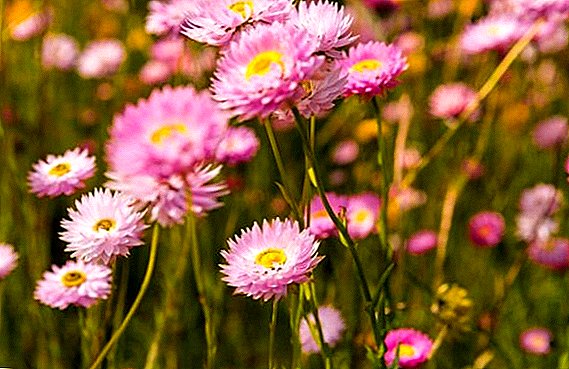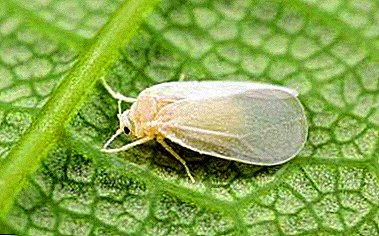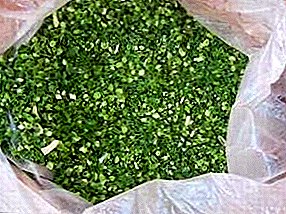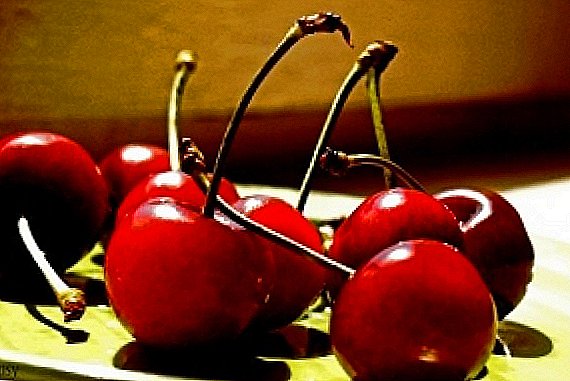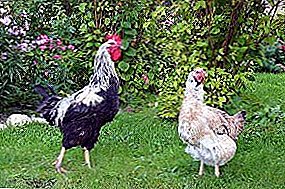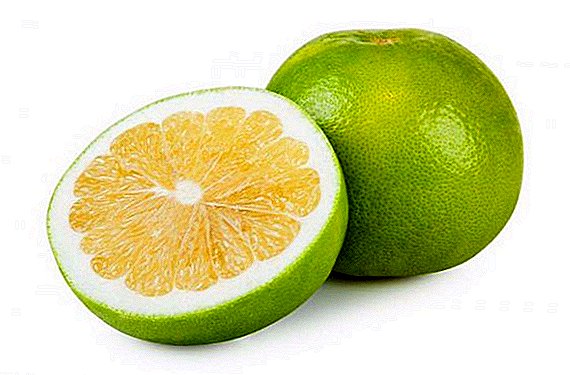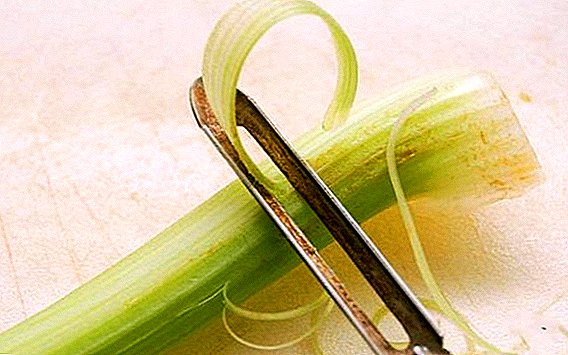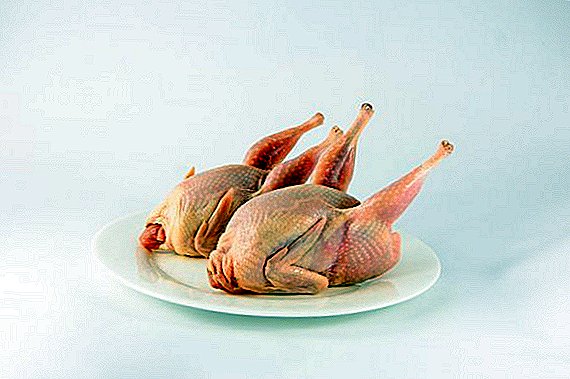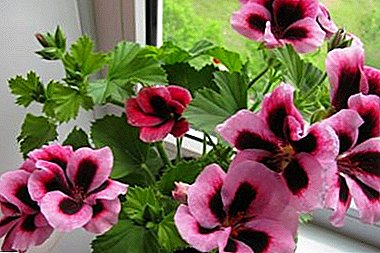
Sometimes, after acquiring a favorite flower, there are some problems that cloud the mood.
The worst thing a grower can expect is the lack of flowering. The article will discuss the causes of this phenomenon and solutions.
If you contain pelargonium in optimal conditions for it, the lush flowering is guaranteed.
Features of the appearance of buds, what happens to the plant at this time?
When the royal pelargonium awakens after a period of rest, it begins to accumulate strength for future flowering. The reproductive organs of the flower are formed in the developing buds.. An umbrella with buds emerges from the bud. At the time of reproduction, they are revealed. Flowers wither after pollination.
Attention! Flowering - the main feature of the plant in the reproduction process. During the entire life cycle, precisely at this time, pelargonium consumes the greatest amount of energy. The exchange processes occur much faster, the consumption and processing of nutrients also increases.
When does it bloom?
 Although royal pelargonium is distinguished by its lush and unique flowering, its terms are very modest. For example, regular pelargonium blooms in early spring, and fades in late autumn. Royal, pleases the eye only 3-4 months a year. The approximate flowering time is April-August.
Although royal pelargonium is distinguished by its lush and unique flowering, its terms are very modest. For example, regular pelargonium blooms in early spring, and fades in late autumn. Royal, pleases the eye only 3-4 months a year. The approximate flowering time is April-August.
The pet is rather capricious and with improper care may not bloom at all. To avoid trouble, before buying, you should carefully examine this type (what varieties this type of pelargonium has, read here).
The necessary conditions
- Temperature. One of the most important indicators, the requirements of which differ depending on the time of year. In winter, the temperature regime should be within +13 +15 degrees. This will allow the flower to be in the so-called resting state. When pelargonium begins to grow actively, it should be maintained at a temperature of + 18 ... +23 degrees. Strong heat adversely affects the pet. In no case should be allowed drafts.
- Humidity. The appearance of various types of diseases often provokes dry and hot air near heating devices. But excessive moisture is also undesirable. Optimum performance from 40% to 60%.
- Lighting. In winter, the sunlight becomes much less, and pelargonium is required. A short light day with ambient lighting is ideal for a plant. Bright and prolonged rays of the sun can contribute to the violation of biorhythms. At the time of growth and flowering, pelargonium prefers more sun. Stretched shoots and pale foliage - a clear sign of lack of lighting.
- The soil. For royal pelargonium, fertile and loose earth is required, with a neutral or slightly acidic reaction. Loamy and clay soil is not suitable. At the bottom of the pot must have a good drainage layer.
Important! During the cold weather you need to carefully monitor the temperature of the soil, because it can differ with the temperature of the surrounding air. This phenomenon is observed on cold windowsills. The situation can be easily corrected by placing a small piece of insulating material under the flower container.
- Pot. The main requirement for the container - the compliance of its volume and size of the roots. Pelargonium should be transplanted when the root system is cramped. If the flower was planted in a large pot, then the flowering will not come soon, as all the forces will be spent on the development of space. The new container is selected only 2-3 centimeters more in diameter than the previous one.
Care instructions
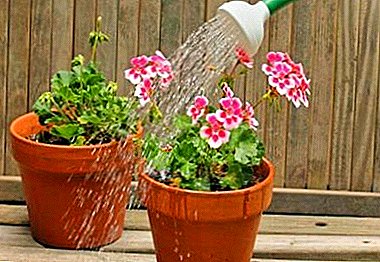 Correct watering. In winter, pelargonium is rarely watered; it is enough to not let the ground dry out. In the summer period, the procedure becomes more frequent and increases in volume. Overdoing is not necessary. A safe option is considered to be watering with a pallet. So the roots will never rot, the soil will always be sufficiently moist, and the humidity around the flower will be optimal.
Correct watering. In winter, pelargonium is rarely watered; it is enough to not let the ground dry out. In the summer period, the procedure becomes more frequent and increases in volume. Overdoing is not necessary. A safe option is considered to be watering with a pallet. So the roots will never rot, the soil will always be sufficiently moist, and the humidity around the flower will be optimal.- Top dressing. Flowering plants are fertilized with complex mineral supplements. Start recommended from the end of February. Once in 3-4 weeks mineral solution is added, which contains potassium. With the onset of flowering feeding is carried out more often, 1 time in 14 days.
- Transfer. This is an essential element in the care of pelargonium. It serves to renew the soil and provide suitable packaging. A transplant is done in the fall. The royal pelargonium does not tolerate strong winds and scorching sun, so if the florist decided to put it outside for the summer, then a new pot should be put in the gazebo, on the veranda or in other protected places.
- Pruning. The procedure, which aims to balance the aboveground and underground parts. It is made after flowering is over. Side shoots are subject to removal, the main ones are only shortened, excess foliage and flower stalks are removed.
Why does not dissolve at home?
- Not enough nutrients.
- The pot is picked up too large.
- The royal pelargonium was attacked by pests.
- The root system is damaged.
- Conditions of detention are not respected.
- Wrong watering.
How to make bloom?
What to do if your favorite flower still ceased to please its lush flowering? The first thing to do is ensure optimal conditions. If the plant has rested during the winter, all measures have been taken for this, but the spring ends and the royal pelargonium does not bloom, you should take measures:
 To conduct an external examination on the subject of insects and diseases. Finding parasites, take immediate action. They can be removed manually or treated with insecticides. Diseases are treated with fungicides, such as:
To conduct an external examination on the subject of insects and diseases. Finding parasites, take immediate action. They can be removed manually or treated with insecticides. Diseases are treated with fungicides, such as:- Fundazol.
- Topaz.
- Vitaros.
- If pelargonium has a healthy appearance, but for some reason gives only foliage, and does not bloom, then you should carefully pull out the flower and look at the roots. If rot is detected, the damaged areas are removed, and the plant itself is transplanted into a new soil.
- If the pet is healthy, you can do fertilizing with fertilizers, 1 time in 2 weeks.
- Compliance with all conditions of detention and the provision of proper care is the key to lush flowering.
Royal Pelargonium does not tolerate neglectbut does not require much attention. The only condition - compliance with all rules and recommendations for care. Gratitude for the attention shown will be a beautiful and bright bloom.


 Correct watering. In winter, pelargonium is rarely watered; it is enough to not let the ground dry out. In the summer period, the procedure becomes more frequent and increases in volume. Overdoing is not necessary. A safe option is considered to be watering with a pallet. So the roots will never rot, the soil will always be sufficiently moist, and the humidity around the flower will be optimal.
Correct watering. In winter, pelargonium is rarely watered; it is enough to not let the ground dry out. In the summer period, the procedure becomes more frequent and increases in volume. Overdoing is not necessary. A safe option is considered to be watering with a pallet. So the roots will never rot, the soil will always be sufficiently moist, and the humidity around the flower will be optimal. To conduct an external examination on the subject of insects and diseases. Finding parasites, take immediate action. They can be removed manually or treated with insecticides. Diseases are treated with fungicides, such as:
To conduct an external examination on the subject of insects and diseases. Finding parasites, take immediate action. They can be removed manually or treated with insecticides. Diseases are treated with fungicides, such as: